NBS Webinar: Report

On May 13th , MGI organized a webinar to get insights on this topic and link them back to the pilot project focusing on blue-green infrastructure in Saltillo.
The speakers, who are part of the UNaLab project, shared with the audience experiences and outcomes of the 4 years of the UNaLab journey. The project aimed at piloting and demonstrating nature-based solutions and analyzing their impact on the ground in more than 10 cities.
Their experience was very useful to the MGI audience since some of the MGI pilot projects are also dealing with the implementation of green interventions. Participants from all around the world joined to listen in.

Nature-Based Solutions (NBS) are ‘green’ solutions inspired by nature which address current environmental, societal and economic challenges leading to urban development. They offer numerous benefits in ares such as social health, public cohesion, biodiversity, and particularly climate change adaptation. NBS focus on deploying actions on the ground with measures such as greening interventions, green roofs and facades, different bio-engineering measures, water sensitive urban designs, to name a few.
Design and implementation insights into renaturing cities
Head of MGI Climate Resilience and Capacity Building Sophie Mok from the Fraunhofer IAO opened the session with an overview of the NBS and UNaLab project.
Andrea Balestrini, Landscape Architect and Head of LAND Research Lab, further took on the short trip showcasing the Genova pilot site under the UNaLab project. He demonstrated how the complex urban challenges such as geographical conditions, dense settlements, the status of the rivers and managing stormwater drainage were tackled by designing NBS in the area. While answering the question from one of the participants on the citizens’ acceptance, Andrea emphasized that co-creation was a key component in the entire process.
Andrea shared with the audience the UNaLab technical handbook which provides a detailed catalogue of NBS ranged by categories according to planning and construction terminology.
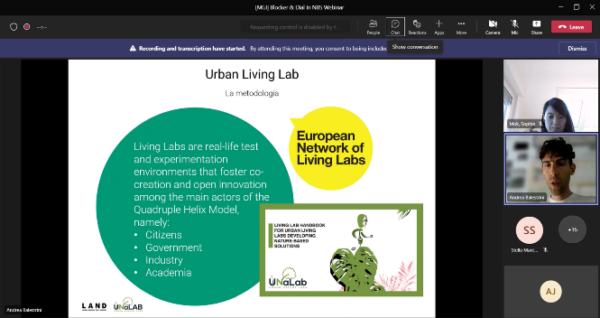
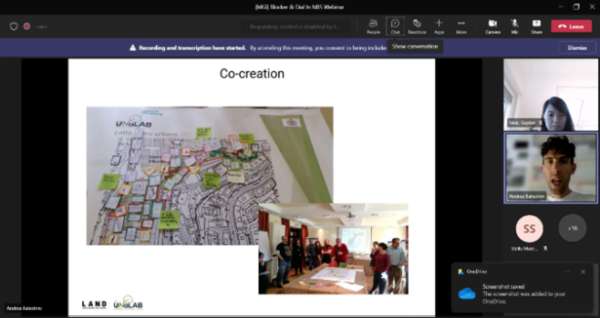
Civil Society Organizations and Environmental Actions in the City of Buenos Aires
The second speaker Mariángeles Viqueira from Buenos Aires presented the role of civil society organization in NBS. In the beginning, she highlighted that stakeholder participation is crucial throughout the policymaking process, not only during the agenda-setting or diagnosis but also in the implementation and evaluation to bring accountability and transparency. In Buenos Aires, citizen participation was ensured through the involvement of Civil Society Organizations (CSO) in building a greener city. As a part of the UNaLab project, the ‘Six Thinking Hats’ tool was employed for semi-structured descriptive and qualitative surveys and interviews during the data collection and analysis process.
She also showcased some of the NBS initiative for the Climate Action plan 2050 for Buenos Aires.
In the end Mariángeles asked participants for their opinions on the role of CSO related to climate resilience and nature-based solutions. Most participants agreed that CSO are crucial for expressing community interests, promoting human rights and also for the topic of climate resilience. However, there was a bit of skepticism if they would be independent of political interests.
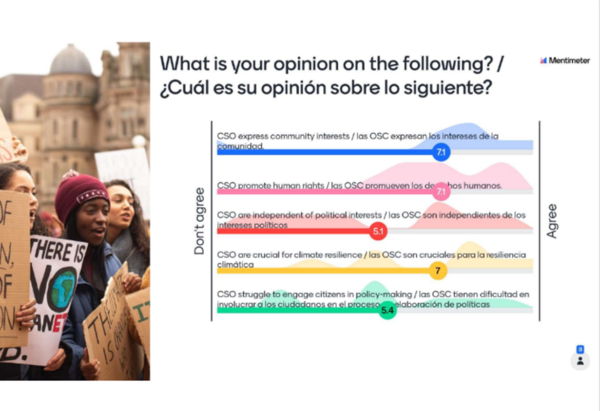
Measuring the Impacts of NBS
The third speaker Dr. Laura Wendling from VTT Technical Research Centre of Finland gave the presentation on measuring the Impacts of NBS. Firstly, she introduced the participants to the handbook for practitioners and methods for evaluating the impacts of NBS.
Further, she explained the methodology for accessing the KPIs must be defined very carefully. On the one hand, the desired outcomes can be achieved by prioritizing more straightforward and scientifically sound performance indicators. On the other hand, the evaluation plans could get complicated and cost-prohibitive.
Laura also underlined that the historical referencing for the assessment could be critical in the rapidly changing climatic conditions. She concluded with the example of the impact assessment of Urban Heat Island after implementing the NBS.

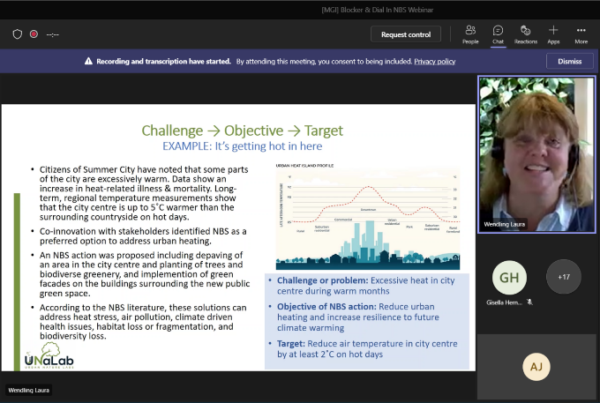
Pilot project Restoration and Integration of Blue-Green Infrastructure in Saltillo
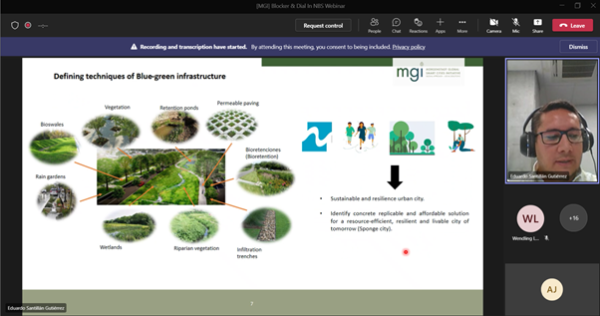
The last speaker, Dr. Eduardo Santillán Gutiérrez from Tecnológico de Monterrey, presented the pilot project in Saltillo about restoration integration and blue-green infrastructure. The pilot project aims to implement nature-based solutions with the blue-green infrastructure approach in areas prone to floodings. The first conceptualization of the project includes different components like water mobility, increasing biodiversity and improvement of public spaces. The City Lab team is working with local stakeholders to define the exact area of intervention and to promote the use of NBS in the sustainable urban development of Saltillo.
Would you like to know more? Here you find the speakers’ presentations slides in English.

